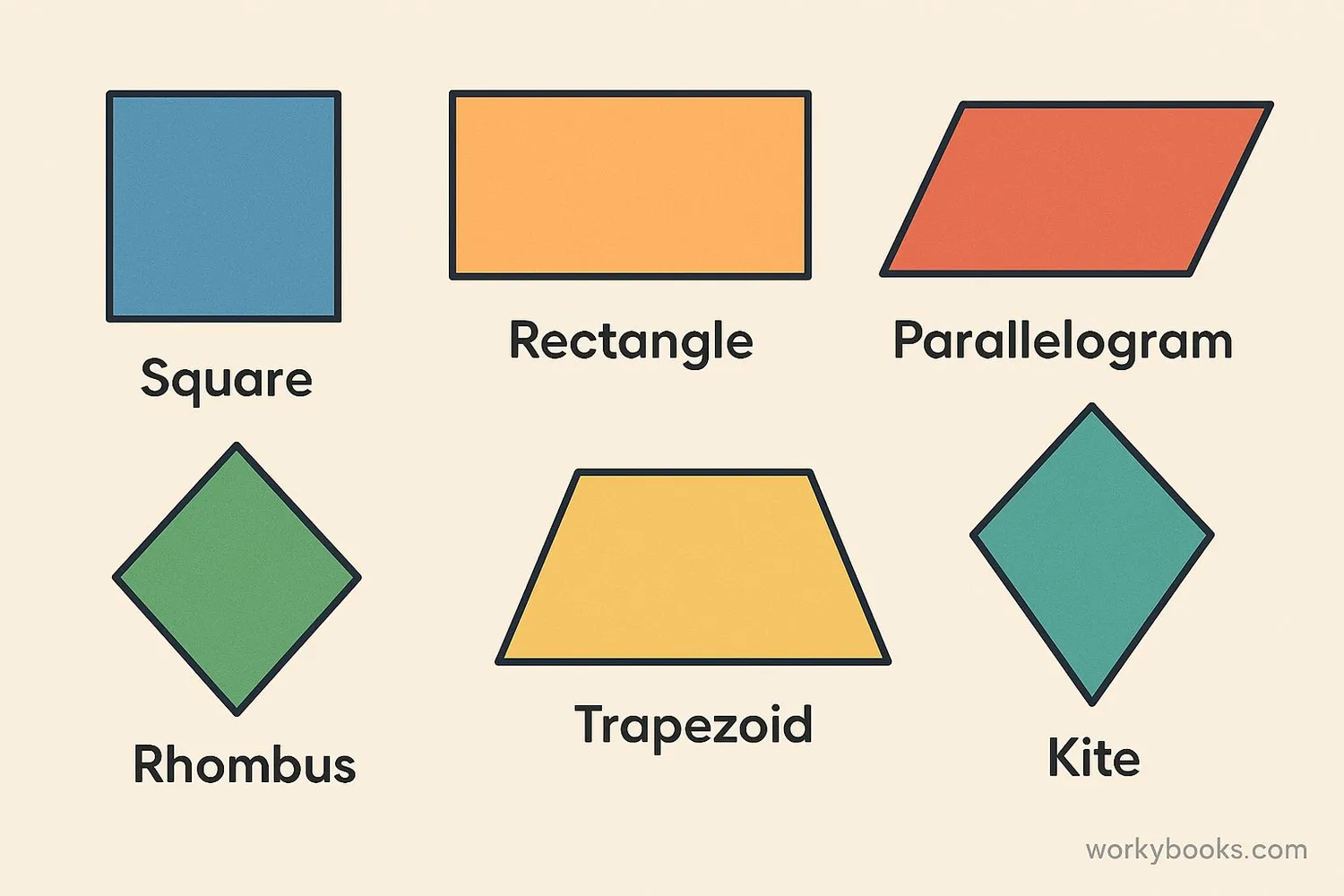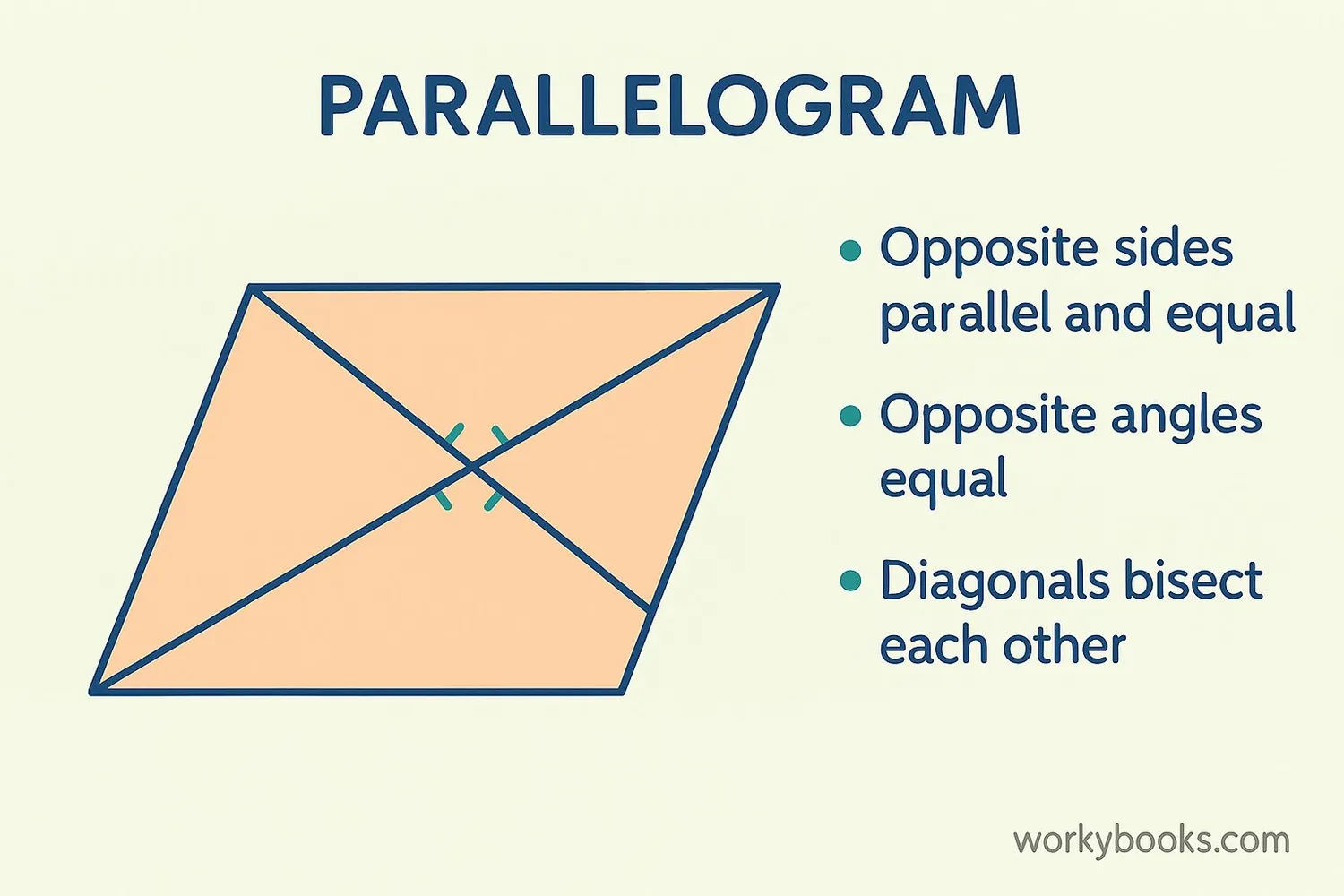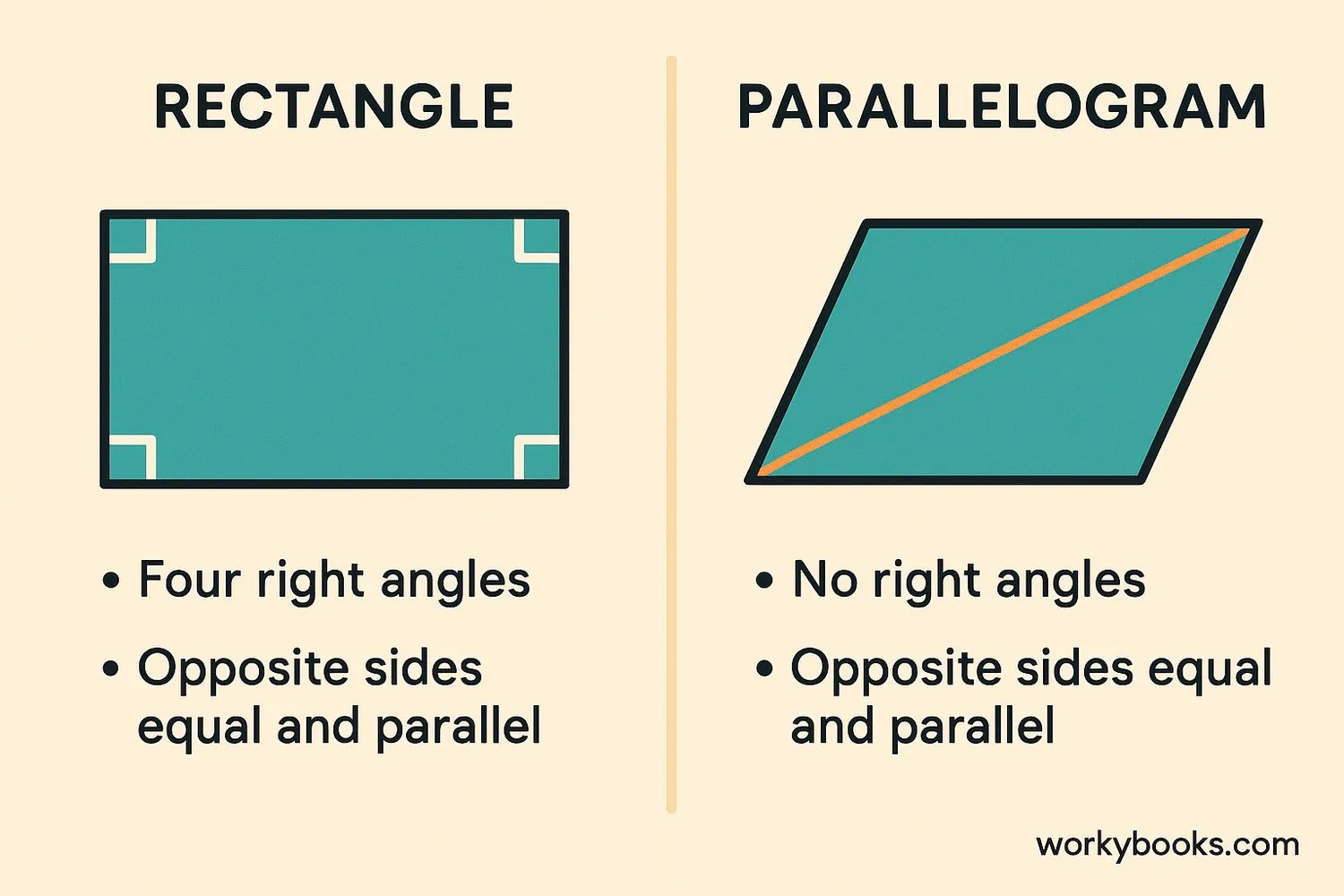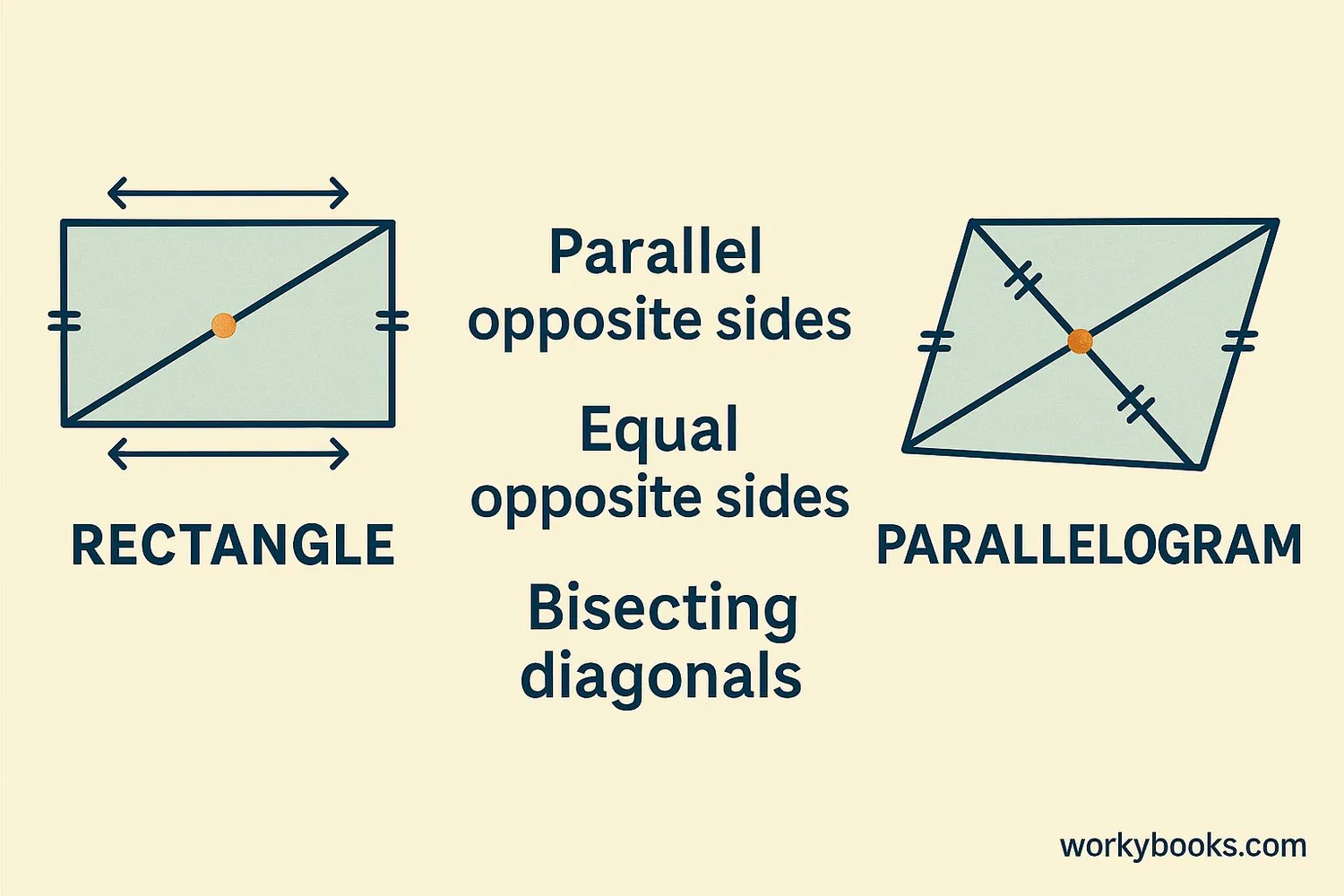Rectangle vs Parallelogram - Definition, Examples, Quiz, FAQ, Trivia
Discover the differences and similarities between these important quadrilaterals
What is a Quadrilateral?

A quadrilateral is a polygon with four sides, four vertices (corners), and four angles. The word "quad" means four and "lateral" means side.
Quadrilaterals are all around us! Think about:
- The screen you're looking at right now
- Pages in your notebook
- Windows in your classroom
- Doors in your home
All quadrilaterals have interior angles that add up to 360 degrees. There are many types of quadrilaterals, including rectangles, parallelograms, squares, rhombuses, trapezoids, and kites.
Key Concept
Every rectangle and parallelogram is a quadrilateral, but not every quadrilateral is a rectangle or parallelogram.
What is a Parallelogram?

A parallelogram is a special type of quadrilateral where opposite sides are parallel and equal in length.
Important properties of parallelograms:
Sides
- Opposite sides are parallel
- Opposite sides are equal in length
- Consecutive angles are supplementary (add to 180°)
Angles
- Opposite angles are equal
- Consecutive angles add to 180°
- Angles are not necessarily 90°
Diagonals
- Diagonals bisect each other
- Diagonals are not necessarily equal
- Diagonals do not necessarily bisect angles
Remember
In a parallelogram, opposite sides are parallel and equal, and opposite angles are equal.
What is a Rectangle?

A rectangle is a special type of parallelogram where all four angles are right angles (90°).
Important properties of rectangles:
Sides
- Opposite sides are parallel and equal
- All sides meet at 90° angles
- Consecutive sides are perpendicular
Angles
- All four angles are right angles (90°)
- Opposite angles are equal
- Consecutive angles are supplementary
Diagonals
- Diagonals are equal in length
- Diagonals bisect each other
- Diagonals create two congruent right triangles
Key Concept
Every rectangle is a parallelogram, but not every parallelogram is a rectangle.
Differences Between Rectangles and Parallelograms

While both rectangles and parallelograms are quadrilaterals with opposite sides parallel and equal, they have important differences:
| Feature | Rectangle | Parallelogram |
|---|---|---|
| Angles | All angles are 90° | Opposite angles equal, not necessarily 90° |
| Diagonals | Diagonals are equal | Diagonals are not necessarily equal |
| Symmetry | Has two lines of symmetry | Generally has no lines of symmetry |
| Right angles | Always has four right angles | May have no right angles |
| Special cases | Special type of parallelogram | Includes rectangles, rhombuses, squares |
Remember
The key difference is that all angles in a rectangle are 90°, while in a parallelogram, angles are not necessarily right angles.
Similarities Between Rectangles and Parallelograms

Rectangles and parallelograms share several important properties since every rectangle is a special type of parallelogram:
Side Properties
- Opposite sides are parallel
- Opposite sides are equal in length
Angle Properties
- Opposite angles are equal
- Consecutive angles are supplementary
Diagonal Properties
- Diagonals bisect each other
- Diagonals divide the shape into two congruent triangles
Key Concept
Since all rectangles are parallelograms, they share all the properties of parallelograms, plus some additional special properties.
Quadrilateral Quiz
Test your knowledge with this 5-question quiz. Choose the correct answer for each question.
Frequently Asked Questions
Here are answers to common questions about rectangles and parallelograms:
Shape Trivia
Discover interesting facts about quadrilaterals:
Ancient Architecture
The ancient Egyptians used rectangles extensively in their architecture. The base of the Great Pyramid of Giza is almost a perfect square, which is a special type of rectangle.
Engineering Strength
Parallelogram shapes are used in engineering for their stability. The parallelogram shape helps distribute forces evenly, making structures like bridges stronger.
Space Exploration
NASA uses rectangular solar panels on spacecraft because their shape allows for efficient arrangement and maximum sunlight exposure.
Largest Rectangle
The largest man-made rectangle is the Kaesong Industrial Region in North Korea, which measures approximately 8 km by 3.5 km (5 miles by 2.2 miles).





